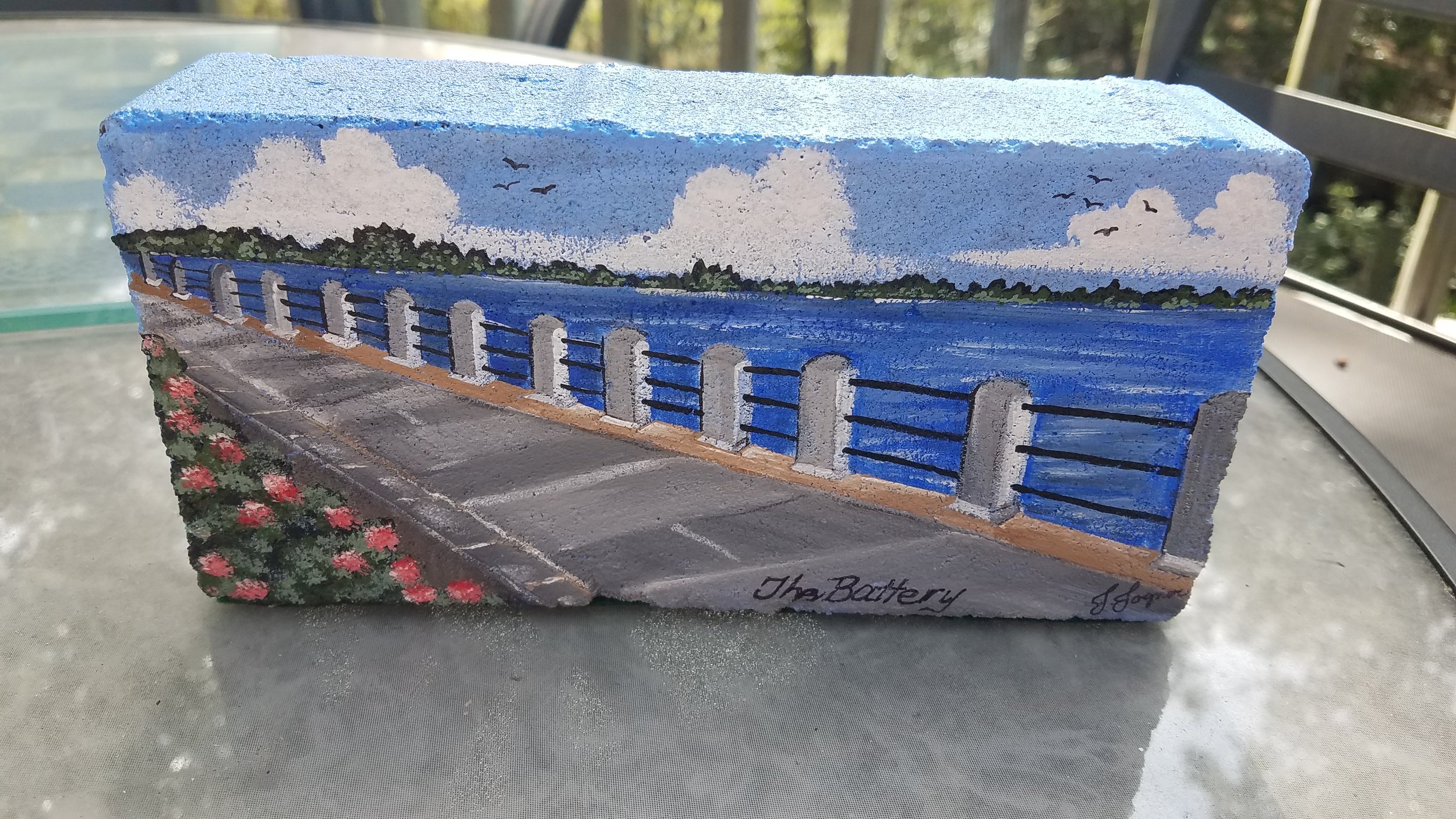
Shop & Such
Aenean lacinia bibendum nulla sed consectetur. Donec ullamcorper nulla non metus auctor fringilla. Duis mollis, est non commodo luctus, nisi erat porttitor ligula, eget lacinia odio sem nec elit. Donec id elit non mi porta gravida at eget metus. Cum sociis natoque penatibus et magnis dis parturient montes, nascetur ridiculus mus.
The Battery Paver Stone
The Battery Paver Stone
- Hand-painted Paver Stone
- The warm ocean breeze. The smells of the water. All on one small brick.
- Each piece is one of a kind created with acrylic paint
A Brief History of the Battery
Charleston has many historical landmarks and as you venture through our wonderful city, you will see most of them. Though you might not realize the exact history behind it, the Battery is one of these intrinsic points of Charleston history.
When the settlers first sailed into what is now Charleston Harbor, looking for a place to land, they passed the tip of the peninsula and landed at Albermarle Point down the Ashley River in 1670. By 1678, it had become obvious that the point that they had passed was the most suitable for a protected settlement. Oyster Point was the name given because the Indians had dumped all of the waste oysters at that point in the area above the low water mark where the Cooper and Ashley Rivers converged.
Colonel William Sayle, the first governor, noted about the area, “It is as it were a KEY to open and shutt this settlement into safety or danger,” in his letter to Lord Ashley, the lord’s proprietor. Defensive positions began to be established to fight off the pirates of that day. In 1718, the notorious Edward Teach, better known as Blackbeard, blockaded Charleston Harbor in order to blackmail the royal governor for medical supplies. Blackbeard threatened execution of a number of prominent citizens he had captured. The governor complied and the citizens were released. Getting no response from the lord’s proprietors when asked for assistance, the local merchants banded together with William Rhett as their commander. Capturing Stede Bonnett, the gentleman pirate, they brought him to Charleston to be tried. His crew was first to be sentenced to be hanged. This hanging took place on the limbs of the Grand Oak Trees which fronted along the Battery. On November 8th they were left hanging for days with the expectation that their captain would soon join them. Due to Stede’s pleading, his trial was delayed 7 times. Bonnett was ultimately hung on December 10th, 1718 at the White Point portion of the Battery.
The Battery has seen attempts to capture Charleston throughout the years from the Revolutionary War to the Civil War. As a result, there are many fortifications from Water Street around the point and back to the foot of King Street. During the Revolutionary War, those fortifications included Colleton Bastion at Water and Meeting Streets, Broughton and Fort Wilkins at Oyster Point, and Gibbes Fort at the foot of King Street. Battery Ramsey occupied White Point Garden during the Civil War. Even though the city of Charleston does not recognize the Battery Park or White Point Garden as “official designations,” the citizens of Charleston will always direct you to “The Battery” if you should ask for directions to either of those destinations.
As the City of Charleston continued to grow and develop, the seawall at Oyster Point was built first using large tree trunks. Along that portion of the Battery from Water Street to the point. One of Charleston’s early hurricanes washed the wall away. It was later replaced with a rock wall that became the foundation for the Battery that we know today.
Along both Murray Boulevard and East Bay Street, you will find glorious homes of great distinction and architectural design. They vary from the simple Row House structures on Murray to the very large mansions of East Bay along High Battery. Looking out across the harbor away from those homes, one can see Charleston´s new Ravenel Bridge, Patriot´s Points´ U.S.S. Yorktown, Castle Pinckney, Fort Sumter, and James Island.
Today, the Battery has been developed into a grand promenade. Both High and Low Battery now run from Chalmers Street, around the point, and down the length of Murray Boulevard. This thoroughfare sees countless pedestrian and vehicle traffic on both the seawall’s sidewalk and the avenues that are considered to be Charleston’s Battery. If you haven´t visited this spot in Charleston yet, you’re in for a real visual treat!
~ David Joyner and Kristen N. Granet














